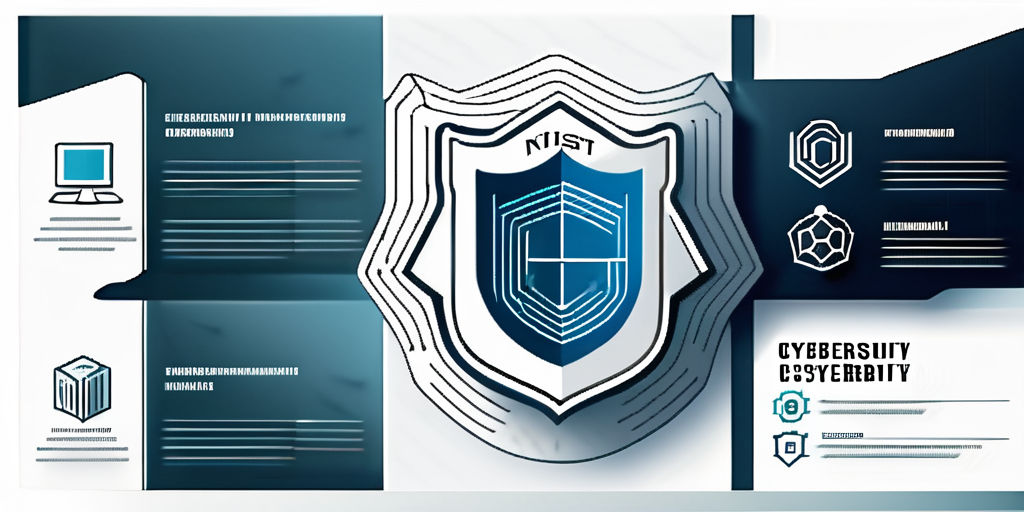The NIST Cybersecurity Framework 2.0 is a comprehensive set of guidelines and best practices developed by the National Institute of Standards and Technology (NIST) to help organizations manage and reduce cybersecurity risks. It provides a structured approach for organizations to evaluate and improve their cybersecurity posture, regardless of their size or industry.
Understanding the NIST Cybersecurity Framework 2.0
The NIST Cybersecurity Framework 2.0 is designed to help organizations protect their critical infrastructure and assets from cyber threats. It provides a common language and framework for organizations to assess and improve their cybersecurity capabilities and resilience.

The NIST Cybersecurity Framework 2.0 is an essential tool for organizations operating in today’s digital landscape. With the increasing frequency and sophistication of cyber threats, organizations must have a robust cybersecurity strategy in place to safeguard their systems, data, and operations. The framework serves as a comprehensive guide, offering organizations a structured approach to managing cybersecurity risks.
The Purpose of the NIST Framework
The main purpose of the NIST Cybersecurity Framework 2.0 is to help organizations better understand, manage, and reduce cybersecurity risks. By following the framework’s guidelines, organizations can identify and implement effective cybersecurity measures to protect their systems, data, and operations.
The framework’s primary goal is to provide organizations with a clear roadmap for strengthening their cybersecurity posture. It enables organizations to assess their current cybersecurity capabilities, identify gaps, and prioritize areas for improvement. By aligning their cybersecurity efforts with the framework, organizations can enhance their ability to prevent, detect, and respond to cyber threats.
Key Components of the NIST Framework
The NIST Cybersecurity Framework 2.0 consists of five key components:
- Framework Core
- Implementation Tiers
- Framework Profile
- Framework Implementation Tiers
- Framework Core Informative References
The Framework Core provides a set of cybersecurity activities, desired outcomes, and applicable references. It helps organizations align their cybersecurity efforts with business objectives and risk management priorities.
The Framework Core serves as the foundation of the NIST Cybersecurity Framework 2.0. It outlines a comprehensive set of cybersecurity activities and desired outcomes that organizations should strive to achieve. These activities and outcomes are organized into five functions: Identify, Protect, Detect, Respond, and Recover. By following the Framework Core, organizations can establish a strong cybersecurity foundation that addresses key areas of vulnerability.
The Implementation Tiers help organizations gauge their current cybersecurity posture and determine the desired level of performance against the Framework Core. The tiers include Partial, Risk-Informed, Repeatable, and Adaptive.
The Implementation Tiers provide organizations with a way to assess their current cybersecurity capabilities and determine their desired level of performance. Each tier represents a different level of cybersecurity maturity, with the Adaptive tier being the most advanced. By understanding their current tier and setting goals for improvement, organizations can chart a path towards enhancing their cybersecurity capabilities.
The Framework Profile allows organizations to create a customized roadmap for improving their cybersecurity posture. It helps organizations identify areas of improvement and prioritize their cybersecurity investments.
The Framework Profile is a crucial component of the NIST Cybersecurity Framework 2.0. It enables organizations to tailor the framework to their specific needs and priorities. By creating a profile, organizations can identify the cybersecurity outcomes they want to achieve and the activities they need to undertake. This customization ensures that organizations can focus their efforts on the areas that matter most to their unique cybersecurity challenges.
The Framework Core Informative References provide additional resources, standards, and best practices that organizations can use to enhance their understanding and implementation of the Framework Core.
The Framework Core Informative References are a valuable source of additional guidance and information. They provide organizations with access to a wide range of resources, including standards, guidelines, and best practices. By leveraging these references, organizations can deepen their understanding of the Framework Core and enhance their implementation efforts. These references serve as a valuable tool for organizations seeking to stay up-to-date with the latest developments in cybersecurity.
The Five Core Functions of NIST Cybersecurity Framework
The NIST Cybersecurity Framework 2.0 consists of five core functions that serve as the foundation for establishing effective cybersecurity practices:
Identify Function
The Identify function helps organizations understand their cybersecurity risks and establish a solid foundation for managing those risks. It involves identifying and documenting assets, systems, and data that are critical to the organization’s operations.
By understanding what needs to be protected, organizations can prioritize their cybersecurity efforts and allocate resources effectively.
Furthermore, the Identify function also includes conducting risk assessments to identify potential vulnerabilities and threats. This involves evaluating the organization’s current cybersecurity posture and identifying areas that require improvement.
Additionally, organizations may also consider conducting regular audits and assessments to ensure ongoing compliance with cybersecurity standards and regulations.
Protect Function
The Protect function focuses on implementing safeguards and security measures to prevent or minimize the impact of a cybersecurity event. It involves developing and implementing security policies, procedures, and controls to protect the organization’s assets and systems.
Examples of protective measures include access controls, secure configurations, encryption, and employee awareness training.
In addition to these measures, organizations should also consider implementing advanced technologies such as intrusion detection and prevention systems, firewalls, and antivirus software to strengthen their protective capabilities.
Moreover, the Protect function also emphasizes the importance of establishing a strong security culture within the organization. This involves promoting security awareness among employees and encouraging responsible cybersecurity practices.
Detect Function
The Detect function focuses on identifying and detecting cybersecurity events in a timely manner. It involves implementing monitoring capabilities and systems to continuously monitor the organization’s systems and networks for any signs of potential security breaches.
By promptly detecting and responding to cybersecurity events, organizations can limit the potential damage and mitigate the impact of the incident.
Furthermore, the Detect function also includes establishing incident response teams and procedures to ensure a swift and effective response to any detected security incidents. These teams are responsible for investigating and analyzing potential threats, as well as coordinating with relevant stakeholders.
Organizations may also consider implementing advanced threat intelligence systems and security information and event management (SIEM) tools to enhance their detection capabilities.
Respond Function
The Respond function focuses on taking appropriate actions to respond to a cybersecurity event. It involves developing and implementing an incident response plan to ensure a coordinated and effective response to a security incident.
Organizations should have processes and procedures in place to contain, mitigate, and recover from a cybersecurity incident. This includes reporting the incident, notifying relevant stakeholders, and restoring systems and data.
Moreover, the Respond function also emphasizes the importance of conducting post-incident analysis and learning from past experiences. By analyzing the root causes of security incidents, organizations can identify areas for improvement and implement necessary changes to prevent similar incidents in the future.
Furthermore, organizations should also establish communication channels with external entities such as law enforcement agencies and cybersecurity incident response teams to facilitate collaboration and information sharing during incident response.
Recover Function
The Recover function focuses on restoring the organization’s capabilities and services after a cybersecurity incident. It involves developing and implementing plans to restore systems, data, and operations to normalcy.
Organizations should have strategies in place to recover from disruptions, including data backups, alternate systems, and disaster recovery plans.
Additionally, the Recover function also includes conducting post-incident reviews to assess the effectiveness of the recovery process and identify areas for improvement.
Organizations should also consider implementing business continuity plans to ensure the availability of critical services and operations during and after a cybersecurity incident.
Moreover, the Recover function emphasizes the importance of continuous monitoring and testing of recovery plans to ensure their effectiveness and readiness.
By implementing the five core functions of the NIST Cybersecurity Framework, organizations can establish a comprehensive and proactive approach to cybersecurity. These functions provide a structured framework for managing cybersecurity risks and ensuring the resilience of critical systems and data.
The Three Tiers of Implementation
The NIST Cybersecurity Framework 2.0 provides a tiered approach to implementation, allowing organizations to tailor their cybersecurity efforts based on their unique needs and risk levels.

Implementing the NIST Cybersecurity Framework 2.0 is a crucial step for organizations in today’s digital landscape. It not only helps them protect their sensitive data and systems but also enables them to build a strong cybersecurity posture that can withstand the ever-evolving cyber threats.
Tier 1: Partial
Tier 1 represents organizations that have limited awareness of their cybersecurity risks and have not yet implemented any formal cybersecurity practices. These organizations have an opportunity to improve their cybersecurity posture by adopting the Framework Core and implementing foundational cybersecurity practices.
By implementing the Framework Core, organizations in Tier 1 can gain a better understanding of their cybersecurity risks and develop a roadmap for enhancing their security measures. This includes identifying critical assets, establishing basic access controls, and implementing basic incident response procedures.
Tier 2: Risk-Informed
Tier 2 represents organizations that have a basic understanding of their cybersecurity risks and have implemented cybersecurity practices to some extent. These organizations have a risk management process in place and leverage risk assessments to inform their cybersecurity decisions and investments.
Organizations in Tier 2 go beyond the foundational practices and focus on building a risk-informed cybersecurity program. They conduct regular risk assessments to identify vulnerabilities and prioritize mitigation efforts. These assessments help them allocate resources effectively and make informed decisions about cybersecurity investments.
Tier 3: Repeatable
Tier 3 represents organizations that have established and institutionalized cybersecurity practices across the organization. These organizations have well-defined processes and procedures for managing cybersecurity risks and regularly review and update their cybersecurity practices to address evolving threats.
Organizations in Tier 3 have a mature cybersecurity program that is integrated into their overall business processes. They have documented policies and procedures for incident response, vulnerability management, and security awareness training. These organizations also conduct regular audits and assessments to ensure compliance with industry standards and regulations.
Tier 4: Adaptive
Tier 4 represents organizations that have an advanced and proactive approach to cybersecurity. These organizations continuously monitor and adapt their cybersecurity practices to address emerging threats and changing business needs. They actively seek innovative solutions and leverage emerging technologies to stay ahead of cyber threats.
Organizations in Tier 4 are at the forefront of cybersecurity. They invest in advanced threat intelligence capabilities, conduct continuous monitoring of their networks, and engage in threat hunting activities. These organizations also collaborate with industry peers and participate in information sharing initiatives to stay updated on the latest threats and trends.
Implementing the NIST Cybersecurity Framework 2.0 is an ongoing process that requires dedication, resources, and a commitment to continuous improvement. By following the tiered approach, organizations can gradually enhance their cybersecurity capabilities and build a robust defense against cyber threats.
Benefits of Adopting the NIST Cybersecurity Framework
Organizations that adopt the NIST Cybersecurity Framework 2.0 can benefit in several ways:
Improved Risk Management
By following the NIST Framework, organizations can improve their understanding of cybersecurity risks and implement appropriate controls to manage those risks effectively. This can help organizations reduce the likelihood and impact of cybersecurity incidents and enhance their overall cybersecurity posture.
For example, organizations can use the Framework’s risk assessment and management processes to identify and prioritize potential vulnerabilities and threats. By conducting regular risk assessments, organizations can stay proactive in addressing emerging cybersecurity risks and ensure that their security controls are up to date.
Furthermore, the Framework’s guidance on risk mitigation strategies can assist organizations in implementing effective security controls. This includes measures such as network segmentation, access controls, encryption, and incident response planning.
Enhanced Communication and Decision Making
The NIST Framework provides a common language and framework for cybersecurity discussions. By adopting the Framework, organizations can improve communication and collaboration between different stakeholders, including executive leadership, IT teams, and risk management professionals.
With a shared understanding of cybersecurity risks and best practices, organizations can make more informed decisions regarding their cybersecurity strategies and investments. This includes decisions related to resource allocation, technology investments, and incident response planning.
Moreover, the Framework’s emphasis on communication and collaboration can foster a culture of cybersecurity awareness and responsibility throughout the organization. This can lead to increased employee engagement and participation in cybersecurity initiatives, ultimately strengthening the organization’s overall security posture.
Compliance with Regulatory Requirements
Many organizations are required to comply with specific cybersecurity regulations and standards. The NIST Framework can help organizations meet these requirements by providing a structured approach to cybersecurity management.
For instance, the Framework aligns with various industry-specific regulations, such as the Health Insurance Portability and Accountability Act (HIPAA) for healthcare organizations and the Payment Card Industry Data Security Standard (PCI DSS) for organizations handling payment card data.
By adopting the NIST Framework, organizations can demonstrate compliance with these regulations and avoid potential penalties or legal consequences. The Framework’s comprehensive guidelines and best practices can serve as a roadmap for organizations to assess their current cybersecurity practices, identify gaps, and implement necessary controls to meet regulatory requirements.
In conclusion, the NIST Cybersecurity Framework 2.0 is a valuable resource for organizations seeking to improve their cybersecurity posture. By following the Framework’s guidelines and best practices, organizations can identify and address cybersecurity risks more effectively, enhance their risk management capabilities, and improve their overall cybersecurity resilience.
As you seek to enhance your organization’s cybersecurity resilience and compliance, remember that expert guidance can make all the difference. Blue Goat Cyber, a Veteran-Owned business, specializes in B2B cybersecurity services tailored to your needs, including medical device cybersecurity, penetration testing, and compliance with HIPAA, FDA, SOC 2, and PCI standards. Our passion is safeguarding businesses and products from cyber threats. Contact us today for cybersecurity help! and let us help you implement the NIST Cybersecurity Framework 2.0 effectively, ensuring your defenses are as robust as possible.


